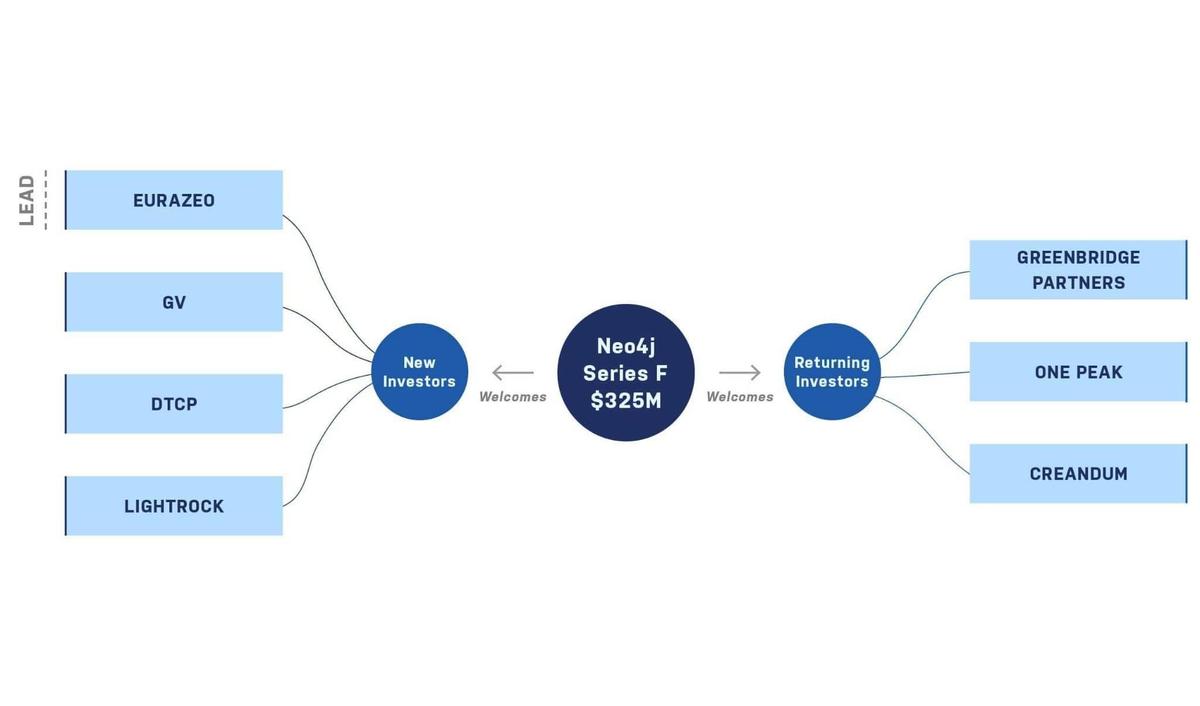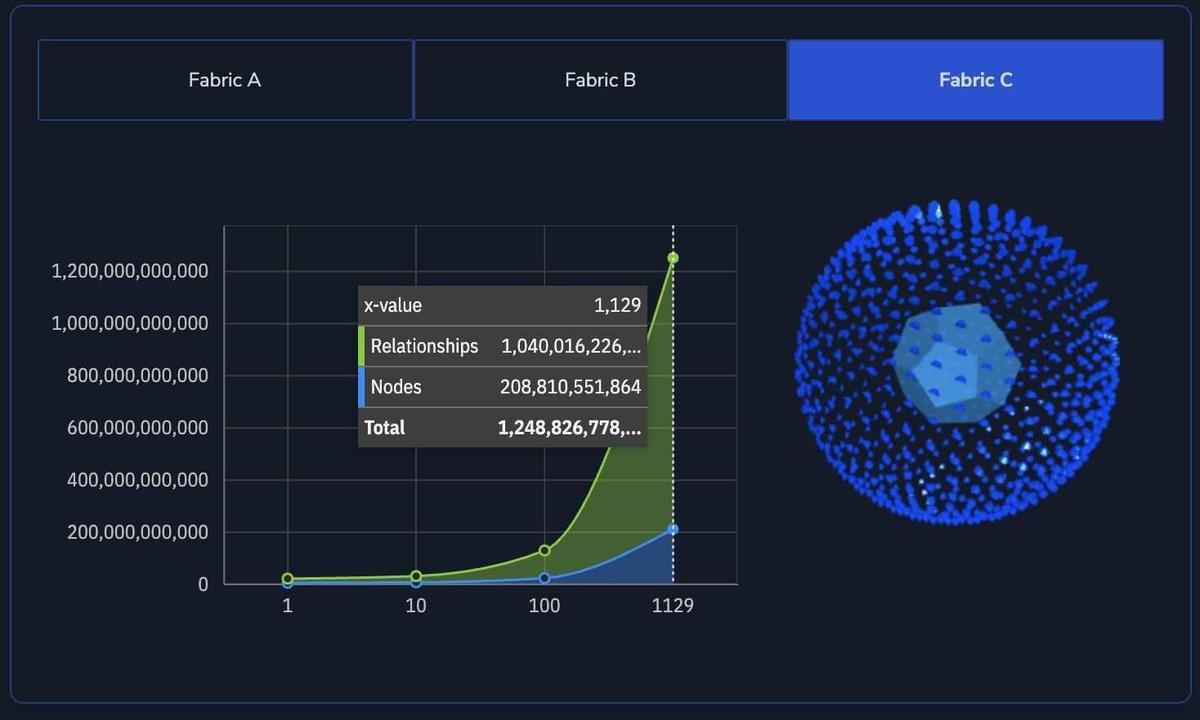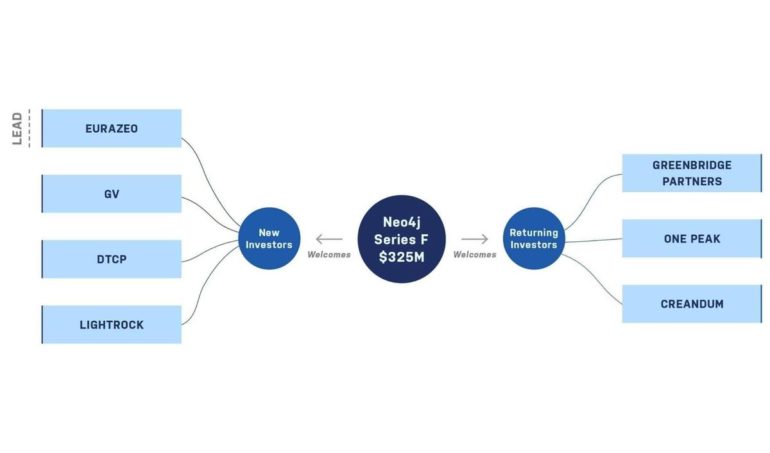If you’re into the market and investment side of things, how does a Series F funding round as part of a $325 million investment led by Eurazeo and GV (formerly Google Ventures), bringing Neo4j’s valuation to over $2 billion sound? Pretty impressive, probably.
If you’re into the technology and applications side of things, how does a Neo4j demo of a social network application with 3 billion people, running queries designed to test the limits of graph query languages and databases across a 1000 node cluster sound? Equally impressive, probably.
Graph database vendor Neo4j CEO and co-founder Emil Eifrem is announcing the funding and showcasing the demo today at the company’s annual virtual conference NODES.
We caught up with Eifrem to get a taste of things to come.
Market affirmation: The biggest investment in database history
Truth be told, we were not entirely surprised to learn about Neo4j’s funding round. We’ve been keeping an eye on all things graph and covered recent funding rounds by TigerGraph and Katana Graph. Upstart Katana Graph scored a $28.5 million Series A, and TigerGraph scored a $105 million Series C, having exited stealth in 2017.
Neo4j is a graph database vendor founded in 2007, claiming to have popularized the term “graph database” and to be the leader in the graph database category. Its last funding round was $80 Million in Series E in 2018. With the competition beefing up their reserves, we were wondering whether Neo4j would follow suit.
Eifrem noted that while 2020 was broadly speaking a very bad year for obvious reasons, it was, in contrast, a very good year for Neo4j’s business. It all comes down to the world becoming increasingly interconnected and increasingly digital, something which Eifrem referred to as “the wind behind our back”.
That means, Eifrem added that Neo4j had lots of money in the bank and burning very little. So the funding was not really needed. It was a bit opportunistic, based on multiples in the market and the fact that there’s a lot of fundraising going on with very rich valuations. Sometimes as an entrepreneur, you have to be opportunistic, Eifrem noted. Eifrem believes there is a fundamental shift underway in databases.

Neo4j announces $325 million Series F investment, the largest in database history
Neo4j
As opposed to 20 years ago, when there was just a handful of relational databases to choose from, today, we might go as far as to say there is too much choice. Databases are the biggest segment of the enterprise software market, currently estimated at around $50 billion and projected to grow to $100 billion in the coming years. After a long period of stagnation in terms of database innovation, NoSQL databases opened the gates around a decade ago.
Today we also have time-series databases, NewSQL, and all sorts of exotic options. What’s going to happen over the next three to five years, Eifrem predicts, is that a few generational database companies are going to be crowned. Graph databases and Neo4j are a significant part of that future data landscape, and today’s funding round is a testament to this, Eifrem went on to add. Neo4j notes that this is the largest investment in a private database company up to date.
We could not help but notice that GV also participates in the round. Although GV makes its own decisions and has its own agenda, it’s still part of Alphabet – the mother company of Google. Unlike Amazon with AWS Neptune and Microsoft, which has Cosmos DB, Google does not have a horse in the graph database race. This, and the fact that Neo4j has a partnership with Google that Eifrem mentioned is going very well, could not possibly have hurt.
GV General Partners Erik Nordlander and Tom Hulme welcomed Neo4j to the GV portfolio. Existing investors One Peak Partners (an investor since 2018), Creandum (an investor since 2014), and Greenbridge Partners (an investor since 2016), as well as new investors DTCP (formerly Deutsche Telekom Capital Partners) and Lightrock, also participated. In addition, Nathalie Kornhoff-Brüls, a Managing Director in the growth team of Eurazeo, has been appointed to the Neo4j Board of Directors.
Developers, developers, developers: The biggest social network ever
For many years, we’ve kept an eye on Neo4j; it’s the first time the company refers to a valuation number, pegging it at $2 billion currently. When discussing this with Eifrem, he mentioned this could be seen as a proxy for the prospects of the graph market segment at large.
According to Gartner, by 2025, graph technologies will be used in 80% of data and analytics innovations, up from 10% in 2021, facilitating rapid decision making across the enterprise. Other emerging leaders in the database market, Eifrem went on to add, have a strong developer play but not much of a data scientist play.
Where Neo4j differs, according to Eifrem, is they are building their data scientist play, and they are doing it on graph-based data science. Indeed, this is an area Neo4j has been investing in. In addition, Neo4j has been expanding its offering to address data scientists, leveraging the fact that graphs have unique advantages to offer to data scientists, too. For example, graph-based machine learning models can leverage more information than others and see rapid growth.
Graph-based data science and machine learning is a topic in and of its own. However, it’s also one of the key areas of investment for Neo4j going forward. Continued investment in the cloud offering, market reach, and developer experience is the other key areas for Neo4j. In addition, the company is partnering with systems integrators and expanding in the APAC area.
Eifrem often attributes Neo4j’s success to the emphasis on developer experience. Case in point, NODES — Neo4j Online Developer Expo & Summit — which Neo4j has been organizing since 2019, aimed specifically at developers. Neo4j pays attention to its messaging for developers, and Eifrem’s keynote at NODES today is no exception.


Neo4j 4.0 introduced Fabric, its solution for horizontal scalability via sharding and federation. A demo to showcases real-time query performance against a graph with over 200 billion nodes and more than a trillion relationships, running on over 1000 thousand machines. Image: Neo4j
Neo4j
Historically, one of the main criticisms on Neo4j has been on its distribution model, which critics argue leads to suboptimal scalability for large graphs. In 2020, Neo4j 4.0 introduced Fabric, its solution for horizontal scalability via sharding and federation. In addition, Eifrem’s NODES 2021 keynote includes a demo to show real-time query performance against a graph with over 200 billion nodes and more than a trillion relationships running on over 1000 machines.
To put it into perspective, Neo4j notes, a graph of a trillion relationships could house a social graph detailing how every person on the planet is connected. Eifrem mentioned that the demo is based on the LDBC Social Network Benchmark. LDBC is a cross-industry initiative working on defining and executing benchmarks for graph database technologies.
Eifrem also mentioned that the setup and configuration of the demo would be made available on GitHub for anyone wishing to replicate this. Not that it will be very easy to do this at the scale Neo4j executed. Just generating the dataset takes considerable expertise and resources. As for running it, securing 1000 servers from AWS was not easy, and it cost over $96k per day. It took lots of effort by the engineering team, who put it together in under one month.
The idea, however, is to make things easier for developers, at least when they’re not running something as demanding. In that direction, Neo4j is also announcing a free tier for Aura, its managed database cloud service. Developers can sign up for free, get up and running at the free tier forever, and start building applications or play around Neo4j at zero cost, Eifrem said.
Making it easy to onboard and then scale up as needed sounds like the way to go. Both investors and developers seem to appreciate this.



